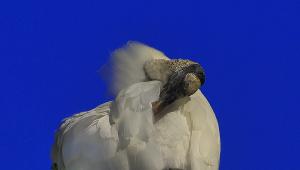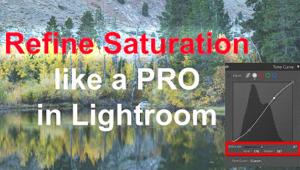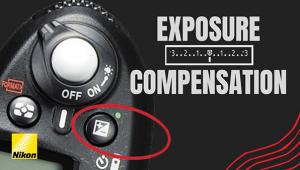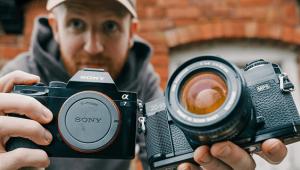Canon’s EOS-1D Mark III; Canon’s High-Performance D-SLR Gets Updated Page 2
 |
|
|
Shortly after the introduction of the EOS-1D Mark III there was buzz all over
the blogosphere about autofocus problems. Because Shutterbug reviews reflect
a mature perspective and not just scoops, our editor asked me to take the time
necessary to check out this potential problem and the first thing I did was
ask a sports photographer friend whose work I admire to shoot with the camera.
He did this with me present one morning by shooting relatively slow-moving cars
in traffic and decided "the camera did indeed have serious problems. Very
few frames per sequence were sharp." I repeatedly asked Canon U.S.A. for
an official comment about the alleged AF problems but none was forthcoming as
this story went to deadline.
As I mulled over this lack of performance it just didn't seem right so
I went back to the very same spot and recreated the same AF test with a few
differences. This time I brought along my personal 1D Mark II to give a direct
heads-up comparison. All shots were made in Manual mode using the same lens,
an EF 70-300mm f/4-5.6 IS USM. In Single Shot AF mode 58 percent of the shots
were in focus with the Mark II. When I switched to Continuous AF the number
of in-focus shots dropped to 56 percent. Next, it was the Mark III's turn.
In Single Shot AF mode 82 percent of the shots were in-focus with 90 percent
in-focus while in Continuous AF mode. Under these conditions both cameras produced
what many would consider an acceptable amount of in-focus shots, but the EOS-1D
Mark III's performance was nearly perfect.
So what do I really think about the Mark III? To paraphrase the question Tom
Hnatiw (www.dreamcargarage.com)
asks about modern supercars: Do you need a camera like this? While the EOS-1D
Mark III is far from perfect, it delivers the kind of stunning image quality
that professional photographers demand and their clients expect.
With apologies to my friend and the blogosphere, my take on the AF allegations
is similar to what the late Señor Wences often said: "Is difficult
for you; is easy for me." If you shoot sports, the 10 fps burst rate gives
you an edge in capturing that one split second that makes the difference between
a good shot and a great one. Every pro or aspiring professional will want to
upgrade to the Mark III as their budgets permit, which are the keywords here,
and as their assignment needs dictate. Do you want a camera like this? Oh yeah!
With a price tag that's similar to the Mark II N and capabilities that
far exceed it, the EOS-1D Mark III, priced at $4499, is a bargain for serious
shooters.
What Else Is New?
The EOS-1D Mark III's Live View shooting mode lets you focus and compose
on the 3" LCD screen and even magnify the image five or 10 times. In a
studio the camera can be connected to a computer running EOS Utility 2.0 software,
allowing you to view what the camera is seeing in real time as well as control
its operation. If you work with remote cameras, the Mark III can be operated
wirelessly with Canon's new Wireless File Transmitter WFT-E2A. This device
lets you view images from the camera's sensor in (virtually) real time
along with the ability to adjust camera settings on the fly.
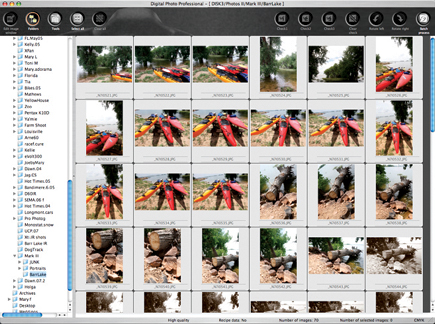 |
Everybody hates cleaning image sensors so the camera's Integrated Cleaning
System should help; indeed, dust specks were not a problem during my tests.
The CMOS image sensor is covered with infrared absorption glass that uses a
"shake your bootie"
self-cleaning system different from the EOS Digital Rebel XTi. You can also
clean the sensor by selecting Clean Now in the camera menu. The process takes
4 seconds and during that time ultrasonic vibration is applied to the infrared
absorption glass and the shutter--now upgraded to 300,000 cycle durability--is
cocked three times so dust falls off and any debris resettling on the curtains
is also shaken off. The final piece of the anti-dust puzzle is software that
records the location of any remaining spots as Dust Delete Data and appends
it to the raw or JPEG file in the IFD portion of the file header. When using
Canon's Digital Photo Professional 3.0 software, any remaining spots are
automatically erased.
Mark II Vs. Mark III
When I tested the Mark II for Shutterbug, I photographed Jaguar Mark II automobiles.
The stylish Mark II appeared in many films but was most notable in the PBS TV
series Inspector Morse. There are no Mark III Jags; the company followed the
Mark II with (what else?) the Mark IX. The Mark III on the other hand was a
popular Lincoln automobile whose most prominent screen appearance was as a pimpmobile
in Roger Moore's first turn as James Bond in Live and Let Die. I asked
the local Triumph club for owners of Mark III Spitfires to come forth to be
photographed for this review, but nobody volunteered.
 |
|
|
- Log in or register to post comments





